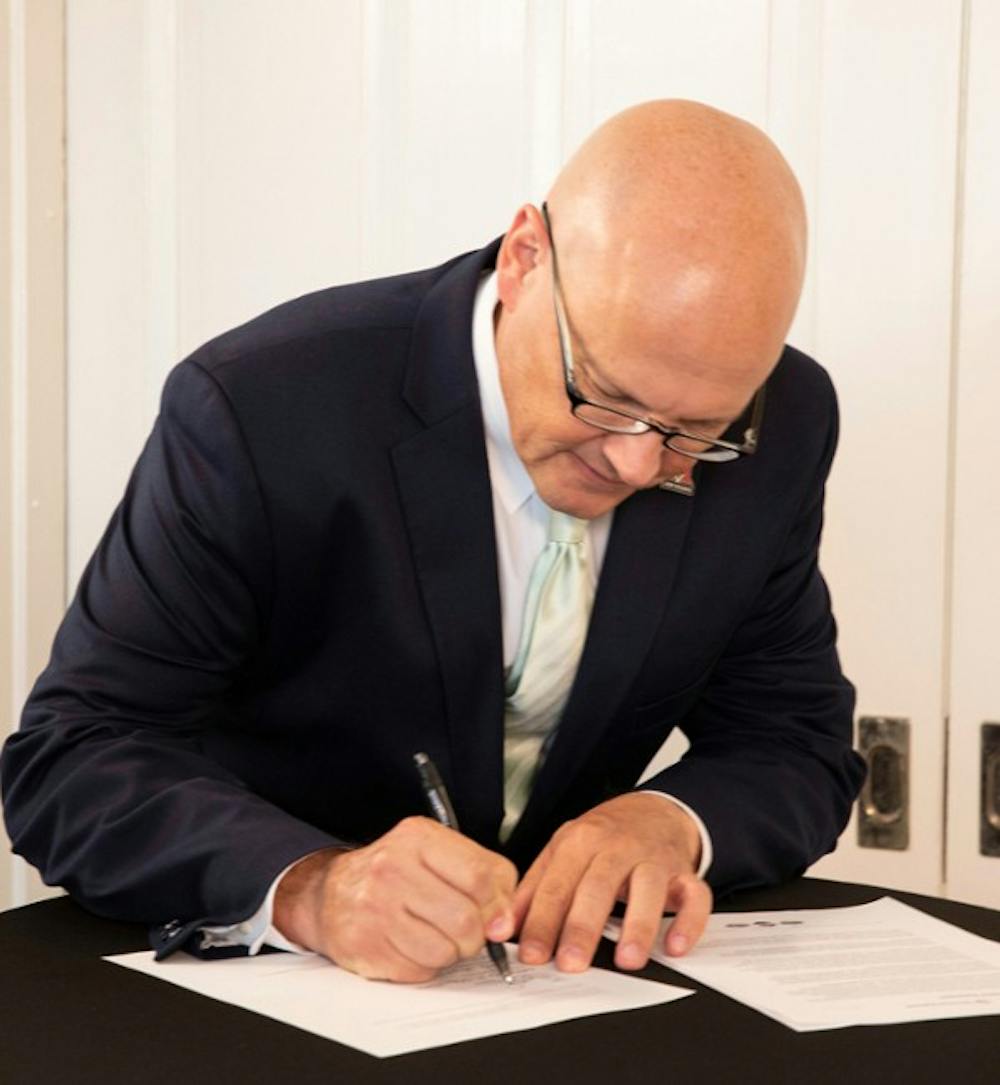Miami University President Greg Crawford signed the Presidents’ Climate Leadership Commitment (PCLC) in a virtual ceremony on Tuesday, Sept. 22.
The Climate Commitment is the most comprehensive of the PCLC commitments, combining the Resilience Commitment (which commits to “adapt to the impacts of climate change through campus/community engagement”) and the Carbon Commitment (which commits to “reduce greenhouse gas emissions and achieve carbon neutrality as soon as possible”) according to Miami’s website.
“This is going to signify our dedication to carbon neutrality and climate resilience for the sake of our planet, our community, our people and our future,” Crawford said.
Before signing the commitment, Crawford introduced members of Miami’s Climate Action Task Force, including co-chairs Jonathan Levy, director of the institute for environment and sustainability, and Adam Sizemore, director of sustainability. Also in attendance were Tim Carter, president of Second Nature, a company that works with universities on climate change efforts and encourages them to sign the PCLC, and Mike Smith, mayor of Oxford.
“This moment gives direction to our future and also advances our long-standing history of sustainability excellence at Miami and our efforts to reduce carbon-based energy emissions,” Crawford said.
Miami has cut its carbon emissions in half since 2008, and coal has not been burned on campus since 2017, Crawford said. Crawford also said the university has reduced its annual fuel usage by approximately 20,000 gallons.
Crawford listed some of the university’s goals with the signing of the PCLC, including expanding reduction efforts in energy and fuel usage, integrating resilience into climate action planning and developing a deeper understanding of the university’s impact on air travel and commuting.
In addition, Crawford said the university hopes to “unite” the campus and local community to collaborate on achieving carbon neutrality.
Climate action planning will also be more integrated into Miami’s curriculum, research and “overall student experience.”
“We will do all this from a position of strength, and together, leveraging our past investments and advancing into the future,” Crawford said.
Miami joins a network of more than 450 institutions who have signed PCLC commitments, 100 of which have signed the Climate Commitment.
“It goes way beyond the individual campus and is really about, ‘How can you mobilize higher education as a sector, and your role within that, to drive the change that we need to see?’” Carter said.
Enjoy what you're reading?
Signup for our newsletter
Carter also stressed that climate change needs to be approached with urgency, and that higher education plays a key role in driving that urgency. He encouraged the university to not only “serve as an actor” when it comes to climate change, but to also enable action by others.
Levy explained the timeline Miami will follow after the signing of the PCLC.
Miami has two years from the signing to write its campus community resilience assessment and three years from the signing to complete its carbon neutrality plan (how and when Miami plans to reach zero net carbon emissions).
The university originally planned to sign the PCLC in April, on the 50th anniversary of Earth Day.
“Since then, a lot has happened,” Levy said. “Our country has been shaken not only by the pandemic, but by continuing examples of systematic racism [and] racial injustice, sparking worldwide peaceful protests. It would be fair to ask if focusing on climate change at this time in our history still makes sense, and to that question, I answer with a resounding yes.”
Sizemore then spoke, saying the signing of the PCLC was not achieved just by one person, but by many groups throughout the university working together.
“This is a collaborative effort amongst everybody, it’s not just about operational things,” he said. “It’s about engagement across campus.”
Sizemore then introduced the executive steering committee, composed of 13 members including various university faculty and staff members that will lead different areas of the climate action task force. Each lead member will be developing subcommittees based “detailed targeted areas” that emerge over the course of the process.
The executive steering committee is also looking for a student representative through an application process.
This student representative will lead a subcommittee to relay, communicate and present updates to the student body. It will also appoint one student to sit on each of the other committees. These students will then meet regularly to discuss how to communicate the task force progress with the student body and make recommendations to the task force, Levy said.
The application to serve as a student representative will be opening soon.




